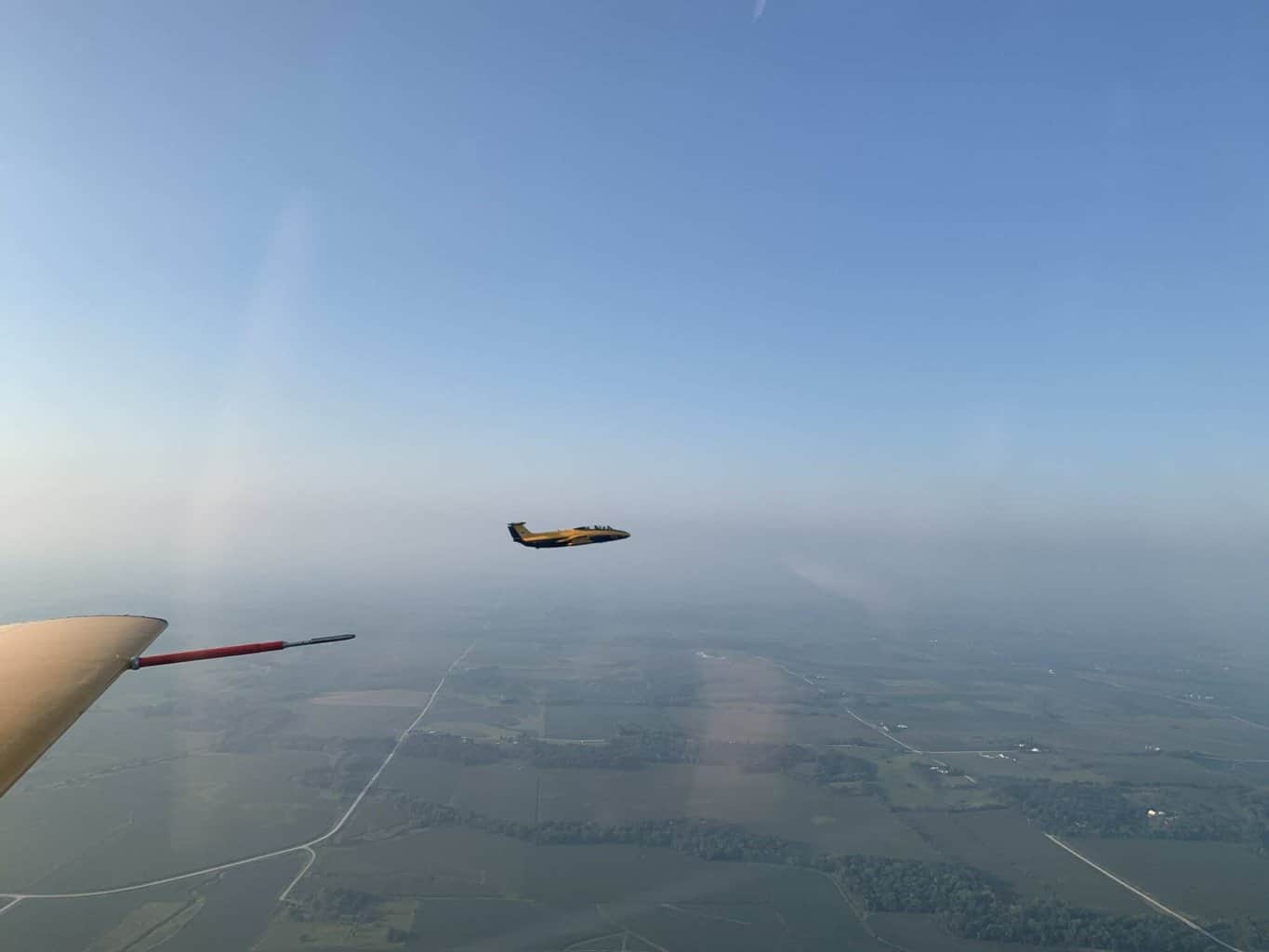Lockheed Martin in conjunction with the University of Iowa's Operator Performance Laboratory (OPL) completed an artificial intelligence (AI) demonstration using two pilot-flown L-29s (acting as surrogates for unmanned systems) performing jamming support in a simulated air-to-ground mission. The successful execution of the electronic attack task by AI agents shows how unmanned autonomous aerial systems can operate in coordination with manned tactical platforms in future combat operations, creating a powerful and unified team to face complex threats.
This project, called Enhanced Collaborative High-Frequency Orientation System (ECOS), was sponsored by Lockheed Martin's 21st Century Security Demonstrations & Prototypes (D&P) organization. “ECHOS is an excellent example of using artificial intelligence and UAS to further enable DOD’s vision of Joint All-Domain Operations (JADO) by providing new capabilities to identify targets and deliver effects,” said Joe Villani, vice-president. president of Lockheed Martin D&P.
The L-29s were flown by experienced OPL pilots, following instructions from AI agents in the form of heading, altitude, and speed cues. Demonstrate how AI can provide data for rapid decision-making and increase mission effectiveness while reducing pilot workload. Pilots retained the option to stop following the AI's cues if at any point they felt unsafe or if the agent attempted to move outside of acceptable operating conditions.
“This was an amazing experience and the event went well. It was an exceptional example of industry and academia working together on a cutting-edge project. We are excited to take this to the next level,” said Tom “Mach” Schnell, Founder and Director of OPL.
AI agents were trained using advanced multi-agent reinforcement learning techniques, encouraging emerging collaborative tactics. There is a minimum reward setting for these agents, emphasizing mission completion. Agents were able to learn these tactics with meager rewards, ensuring that the best possible tactics for the mission were executed.
This demonstration focused on simulation transfer to train an AI agent in a simulated environment, fly it in real aircraft, and test its behavior. Tests have successfully demonstrated that AI agents can be trusted to provide high performance and reliable behaviors. During the first day of testing, agents lined up between the fighter and the target within a very tight tolerance, never allowing the radar to track the fighter. The team successfully completed all test cards ahead of schedule in three days of testing.
By the end of 2023, the Skunk Works and OPL team will test the AI in an end-to-end suppression and destruction of enemy air defenses (SEAD/DEAD) mission. Lessons learned will inform subsequent AI/autonomy development in support of future programs such as the Air Force's Collaborative Combat Aircraft (CCA), as well as the continued development of manned and unmanned teams.
Do you want to receive our news firsthand? Click Here and be part of our Group on Whatsapp or Telegram.


